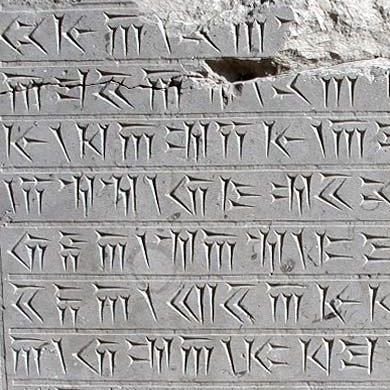Farsi: Old Persian which was spoken during the Achaemenid Empire (550-330 BC)

Farsi is one of the most widely spoken languages in the world, with over 100 million native speakers. It’s also the official language of Iran and Afghanistan, as well as being spoken by large communities in India and Pakistan.Farsi is one of the official languages of Tajikistan too. It is also spoken in Bahrain, Iraq, Kuwait and Qatar by small communities of Iranian expatriates. In addition to being spoken by native speakers around the world, Farsi has been used as a literary language for centuries.

Farsi is an Indo-European language, and it’s closely related to other languages like English, Spanish and Russian. Farsi has been around for a long time; it was first written down in the 9th century AD. In fact, some people think that Farsi might be one of the oldest languages in existence. The word “Farsi” comes from an Arabic word meaning “Persian.” This makes sense because Farsi is spoken by people who live in Iran (known as Persia until 1935).
ORIGINS:
The Farsi language has a long history that stretches back thousands of years to when it first began to develop from its Indo-European roots. Over time, this language split into two branches: Eastern Farsi (spoken in Iran) and Western Farsi (spoken in Afghanistan). The word “Farsi” itself comes from an Arabic word meaning “Persian”–a reference to those who spoke this particular branch of Indo-European languages when Arab invaders came into contact with them during their conquest of Persia (modern-day Iran).

The origin of Farsi can be traced back to Old Persian which was spoken during the Achaemenid Empire (550-330 BC). During this period many different dialects emerged but eventually only 2 survived: Pahlavi (spoken in northern Iran) and Dari/Afghanistani (spoken in southern Afghanistan).
HISTORY OF FARSI:
The history of Farsi language can be traced back to the Old Iranian language. The Old Persian was the official language of Achaemenid Empire and was used in inscriptions, documents and letters.
After the fall of Achaemenid Empire, Middle Persian became the official language under Parthian rule. During this period Pahlavi script was invented which later evolved into an alphabet called Manichaean script or Manuscript Alphabet by Europeans.

Modern Persian is a continuation of Middle Persian, which in turn was a continuation of Old Persian. The name “Iran” comes from Airyanem Vaejah, one of the first capitals of the Achaemenid Empire. In modern times, there has been much debate over whether or not to use “Persian” or “Farsi” as the standard international name for this language; both are used interchangeably by native speakers and linguists alike.
The history of Farsi can be divided into three main periods: Old (Classical) Farsi (also known as Sassanian), Middle Farsi (Classical/Medieval), Modern Farsi (Modern).
The Farsi language has undergone many changes in its history. In the 20th century, there were many reforms made to the language by Iranian linguists and scholars. They wanted to make Farsi more accessible for everyone and improve its status as a modern language.
The first reform was done by Mohammad Ali Foroughi (1878-1954), who was known as “Iran’s father of modern linguistics.” He created new rules for writing Farsi that would make it easier for people outside of Iran to learn how to read and write in this ancient language. This change helped spread Farsi around the world because now anyone could learn how to speak it without having had previous experience with it before.
Another important change occurred during World War II when many Iranians moved out of their country due to political instability there at that time; these refugees brought their culture with them wherever they went, including their native tongue.
In the 21st century, Farsi is experiencing a renaissance. The growth of Persian-language media has led to a surge in interest in learning the language. Digitalization has made it easier than ever before for people around the world to access Farsi content online and learn how to speak it fluently.
Farsi is also becoming more prevalent in education; many universities offer courses on Persian literature or history that are taught exclusively in Farsi, which helps students develop their skills as well as their appreciation for this rich cultural heritage.

The Farsi language has a rich history and is present in many different aspects of popular culture. Here are some examples to learn Farsi in entertaining way:
- Farsi music: Many artists sing in the Farsi language, including pop singers like Googoosh and Shajarian, one can listen to their songs.
- Farsi movies: If you’re looking for an entertaining way to learn more about the culture, check out some classic Iranian films like Children of Heaven or A Separation.
FEATURES OF FARSI LANGUAGE:
Farsi is written in the Arabic script, which was adopted from the Persians. The Arabic alphabet was developed by Arab tribesmen in the 7th century CE and later spread to other parts of the Middle East and North Africa. Farsi has four main styles of writing: Nasta’liq (the most ornate), Naskh (a simplified version of Nasta’liq), Ta’liq (another style that evolved alongside Naskh), and Perso-Arabic script (used mainly for religious texts).

DIALECTS OF FARSI:
- Tajiki
- Pashto
- Dari
- Hazaragi
- Luri (Lurish)
- Bakhtiari (Bakthiari)
- Gilaki
and Mazandarani - Basseri
- Sistani
- Standard Persian
INFLUENCE OF OTHER LANGUAGES ON FARSI:
- Arabic: The influence of Arabic on Farsi is quite significant and can be seen in many aspects of the language. For example, many words borrowed from Arabic have been incorporated into Farsi vocabulary, such as “mashallah” (“God willing”), “shukran” (“thank you”) and “salaam alaikum” (“peace be upon you”).
- Turkish: Turkish also had a major impact on Farsi when it was used as an administrative language by the Seljuk Turks during their rule over Iran from 1037-1194 CE. During this time period many Turkish words were introduced into Persian literature and culture; some examples include: “khanah” (castle), “bastan” (countryside) and “kalender” (calendar).
- French: French has had little influence on modern day Persian but did play an important role during its colonial period when France occupied parts of Iran from 1723 until 1921 CE. Many French terms entered into common usage during this time period including: “ferdowsi,” named after famous poet Ferdowsi; “tabriz,” named after Tabriz City; and even more commonly used words like “shahrvand,” meaning city dweller.

CONCLUSION:
Like every other language Farsi has also seen its days of glory to days of decline. With English becoming the biggest global language, many regional languages are either dead, on brink of extinction or on the path of decline as a language. Any language’s survival depends on its speakers giving it the due importance. If this continues there is a world ahead where most languages and our cultural vastness will start to shrink. No wonder most governments and people have begun giving importance to their regional languages apart from learning only English. There is hope for Farsi to continue flourishing in today’s world with more natives taking initiative to learn and keep it alive.


